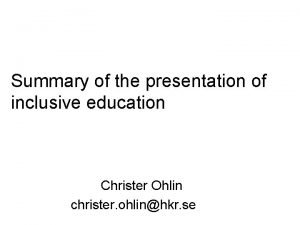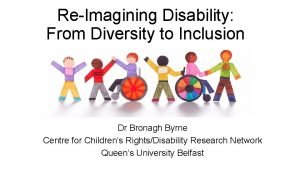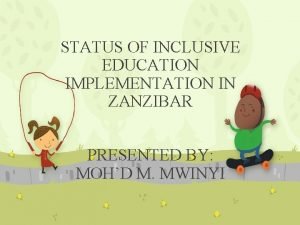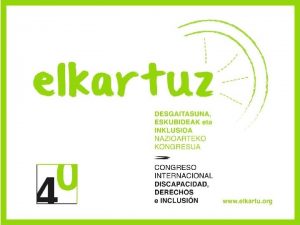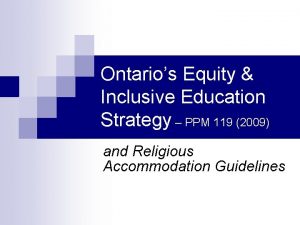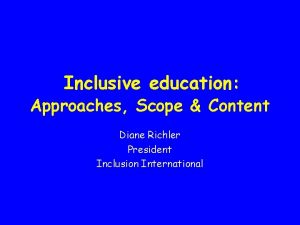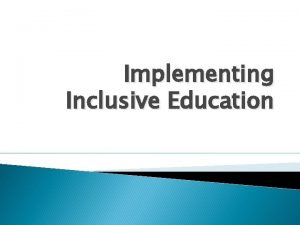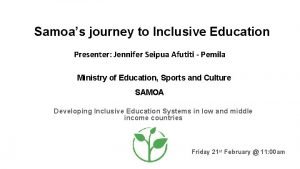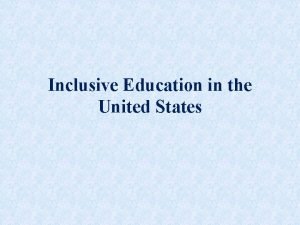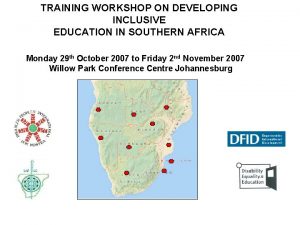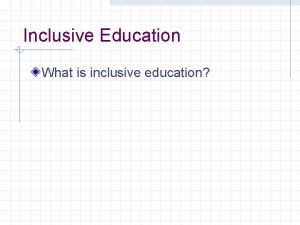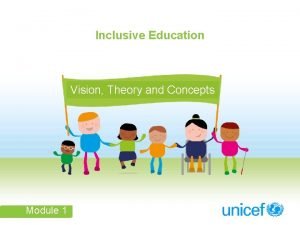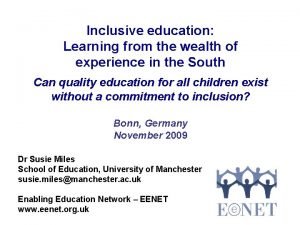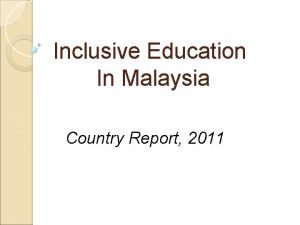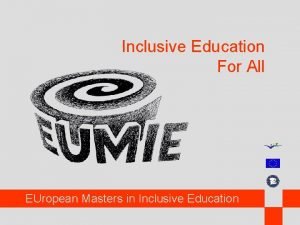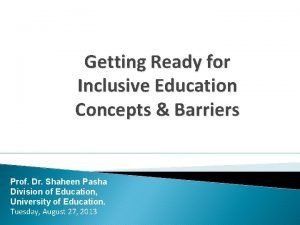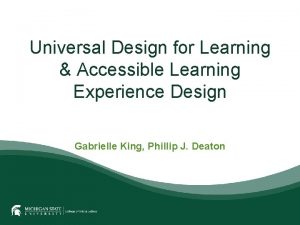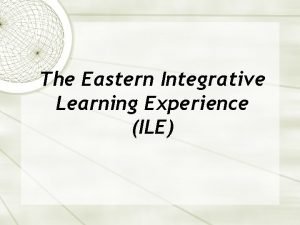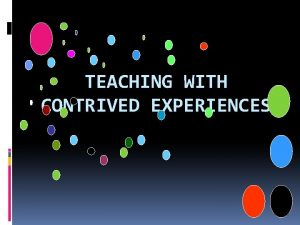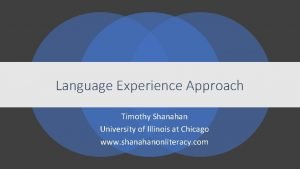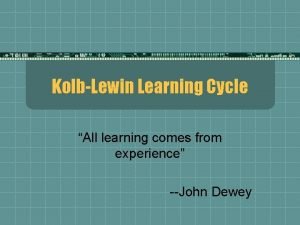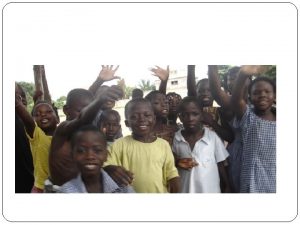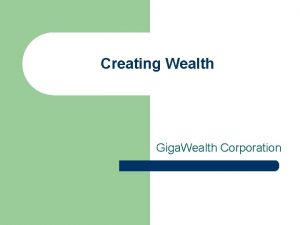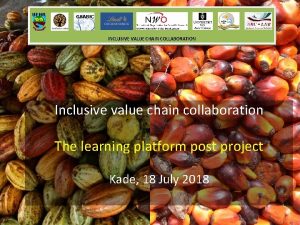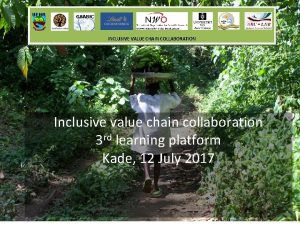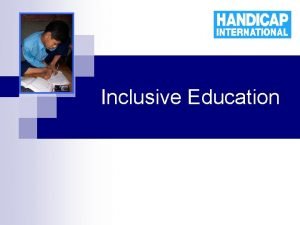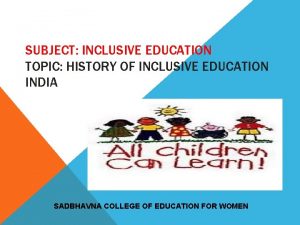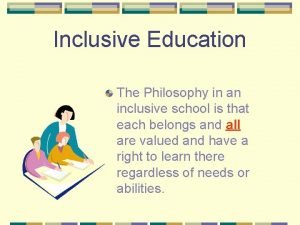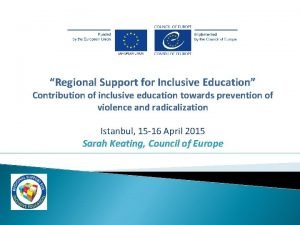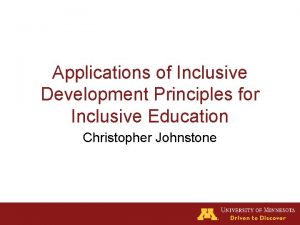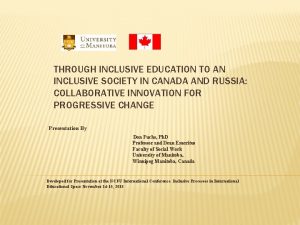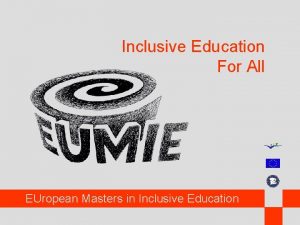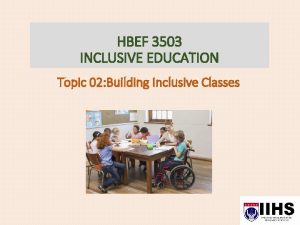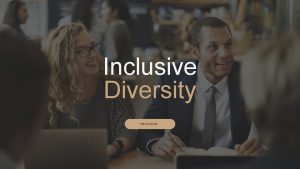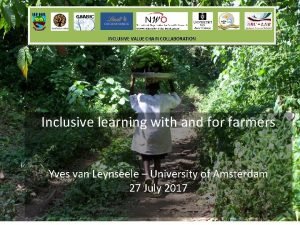Inclusive education Learning from the wealth of experience































- Slides: 31

Inclusive education: Learning from the wealth of experience in the South Can quality education for all children exist without a commitment to inclusion? Bonn, Germany November 2009 Dr Susie Miles School of Education, University of Manchester susie. miles@manchester. ac. uk Enabling Education Network – EENET www. eenet. org. uk

Is it possible to adopt an anti-imperialist stance on inclusive education?

The Enabling Education Network EENET is a participatory international network that provides information about including all children in education, focusing on incomepoor, Southern countries. The network makes easy-to-read information about inclusive education available through its website and newsletter, and by responding to individual enquiries. One of EENET’s core beliefs is that some of the most interesting and pioneering practice in making education accessible for all is happening in countries of the South.

Overview 1. Defining key terms 2. Exploring ‘quality’ 3. Learning from Save the Children UK’s experience of ‘mainstreaming’ disability work

Part 1 Defining key terms

North and South The dynamics of global power relationships are over-simplified in the following terms: • • • coloniser / colonised; rich / poor; developed / developing; Majority World / Minority World; North / South I am using the terms ‘North’ and ‘South’ because they are commonly used. Yet they are inadequate in expressing the true extent of inequality in the world - since they express economic differences in geographical and spatial terms, and could be accused of concealing global inequality. Miles, 2009

Defining inclusive education “Inclusive education refers to a wide range of strategies, activities and processes that seek to make a reality of the universal right to quality, relevant and appropriate education. It acknowledges that learning begins at birth and continues throughout life, and includes learning in the home, the community, and in formal, informal and non-formal situations. It seeks to enable communities, systems and structures in all cultures and contexts to combat discrimination, celebrate diversity, promote participation and overcome barriers to learning and participation for all people. It is part of a wider strategy promoting inclusive development, with the goal of creating a world where there is peace, tolerance, sustainable use of resources, social justice, and where the basic needs and rights of all are met. ” Stubbs, 2008

Rwandan definitions “The way the term ‘inclusive education’ is used in Rwandan policy documents is arguably conceptually empty” Karangwa et al, 2007 Since inclusive education cannot be translated into Kinyarwanda, Rwandan teachers proposed the following definitions: • • ‘mixed education’ (uburezi mvange); ‘education that suits all’ (uburezi mberabose); ‘non-exclusionary education’ (uburezi budaheza) ‘non-segregated education’ (uburezi ntavangura).

Confusing, contested and controversial Different ways of thinking about inclusion: • Inclusion as a concern with disabled students and others categorised as ‘having special educational needs’. • Inclusion as a response to disciplinary exclusion. • Inclusion in relation to all groups seen as being vulnerable to exclusion. • Inclusion as developing the school for all. • Inclusion as ‘Education for All’. • Inclusion as a principled approach to education and society. Ainscow et al, 2006

What does inclusion look like?

Definitions of Quality • Quality education should be relevant, age appropriate, participatory, flexible, inclusive, protective and human rightsbased. Global Campaign for Education World Assembly, January 2008 Economist approach Efficiency and cost effectiveness; • narrow range of learning outcomes: primarily cognitive development, enrolment and retention. Humanist approach Focus on educational processes more than measurable outcomes • whole child • learner-centred pedagogies • democratic school governance

An inclusive approach to quality education for all (EFA) Focus on disability rights Inclusive education EFA UPE Improving the quality of education

Part 2 Exploring ‘quality’

Inclusive national policy development Positive Attitudes – at all levels Teacher education and development Inclusive quality education Key features Parent and community engagement in education Early childhood care and development Inclusive learning environments Healthy and well nourished students Child to Child principles; and pupil voice Locally relevant and accessible curriculum; and fair assessment processes Adequate finance for salaries, books, furniture, Braille, sign language, etc

Weak capacity of government departments responsible for inclusion Negative perceptions of individual learning potential Teacher recruitment and retention crisis Threats to inclusive quality education Main focus on academic achievement; and grade repetition Corporal punishment Separatist thinking in international agencies Early marriage Large class sizes Scarce specialist equipment eg magnifiers Lack of availability of textbooks, including Braille

Promoting inclusive environments: Physical access This bridge is the only access to the nearest school Oriang, Kenya: An inclusive education programme supported by Leonard Cheshire Disability

“Levelling” the school environment, Oriang, Kenya Teachers and pupils working to prevent soil erosion.

New toilets adapted for students and staff.

The importance of good quality lighting This window has been enlarged to improve light quality.

Inclusive learning environments Improved seating arrangements, collaborative learning, well lit classrooms, walls painted white.

Teacher education and development, Zambia: Using reflective writing to overcome superstitious beliefs It is Anton’s first day at school. He has albinism. The aim of the teacher’s lesson is to teach the pupils “to socialise with an albino freely, communicate with him, accept him as a member of our class”. However, when he sat down “the other pupils ran away”. The teacher had difficulty in encouraging the children to stand near Anton and to hold his hand. In her account, she confesses to her own fears: “Worse still, myself as a teacher, I was not so free with him, I feared his hands, he had sores on them … my belief was that whenever you see an albino you have to spit saliva on your chest”. However, she overcame these fears and superstitions: “I just forced myself and I did not want to show it to the pupils that I was not happy with him. We rubbed hands together for the first round, pupils were again surprised to see me do this. ” Miles, 2009


Parent engagement in education, Uganda Deaf children were included in units attached to mainstream schools in the rural district of Bushenyi where the majority of parents had no formal education. In the school holidays, however, the children were socially isolated because their parents did not know any sign language. The unit teachers suggested the idea of setting up parents’ groups in order to help families learn to communicate with their children. There were two major challenges: – communication difficulties between parents and the schools – parents’ mistrust of schools and Sign Language.

Financing sign language learning Initially the ‘free meal’ and the ‘transport refund’ was a bigger motivation than the sign language lessons, but after about 5 meetings, the parents made a real breakthrough. Although they were sceptical at first, now they are enthusiastic about sign language and their children. They can see that their children can perform educationally and they want to know where their children will go after primary school! This is such a big change from ‘my child can’t learn’ to the expectation that the children can pass the primary school leaving exams – especially since 60% of the hearing children in village schools fail these exams. Nathalie Arinda, Special Education Advisor, Uganda, Wilson et al, 2008

Part 3 Learning from Save the Children UK’s experience of ‘mainstreaming’ disability work

Save the Children UK history • Disability policy (focus on inclusion): 1987 • Global and regional disability and gender advisors: 1987 -2003 • Diversity advisors: from 2003 • Education programme – strong focus on diversity; access in fragile states; and language • Child participation focus brings children and young people’s voices into disability debates • Disability issues are being brought into wider advocacy campaigns – e. g. education, poverty, protection

Challenging discrimination • Save the Children recognises that it should continue to have a role in speaking out about disability • resources are allocated to diversity and non-discrimination work • the child rights framework enables coherent policy and advocacy work on a spectrum of discrimination and exclusion issues

Limitations • new areas of international advocacy are weaker on disability • new programmes have been slower to cater for disabled beneficiaries in project work • induction and training for staff and partners on disability and diversity has been uneven • fear of ‘getting it wrong’ on disability can be a big barrier to mainstreaming.

Promising practice • Challenging schools to include Roma children, Northern Serbia; • Training teachers to use more interactive methods to prevent children from dropping out of school, Nepal; • Supporting the development of parent advocacy groups, Mongolia; • Promoting girls’ education through childfriendly, learner-centred methods, Somalia. Save the Children UK (2008)

Challenging threats to equity in education by: • • • Starting with existing practices Seeing difference as an opportunity Scrutinising barriers to participation Using available (human) resources Developing a language of practice Creating conditions that encourage risk-taking While remaining focused on promoting quality inclusive education.

Change is uncomfortable Three responses to inclusion • Ostriches Burying their head in the sand being swept away by the tide; • Rubber ducks Linguistic adjusters - bobbing around on the tide of history, changing their words, but not their actions; • Surfers Riding the waves to a better place, enjoying the excitement. The incoming tide is a welcome challenge, not a threat. Mike Oliver, ISEC 2000 Enabling Education, Issue 5
 Inclusive education conclusion
Inclusive education conclusion Reimigining disability and inclusive education
Reimigining disability and inclusive education Inclusive
Inclusive Reimigining disability and inclusive education
Reimigining disability and inclusive education Ontario's equity and inclusive education strategy
Ontario's equity and inclusive education strategy Scope of inclusive education
Scope of inclusive education Unesco inclusive education
Unesco inclusive education Inclusive education policy
Inclusive education policy Inclusive education in usa
Inclusive education in usa Inclusive education and community partnership
Inclusive education and community partnership Objectives of inclusive education
Objectives of inclusive education Conclusion of sarva shiksha abhiyan
Conclusion of sarva shiksha abhiyan Aims and objectives of inclusive education
Aims and objectives of inclusive education Objectives of inclusive education
Objectives of inclusive education Inclusive education definition
Inclusive education definition Disadvantages of inclusive education slideshare
Disadvantages of inclusive education slideshare Miguel lopez melero
Miguel lopez melero Acrostic examples
Acrostic examples Barriers to inclusive education
Barriers to inclusive education Experience expectant vs experience dependent
Experience expectant vs experience dependent Continuity vs discontinuity
Continuity vs discontinuity Direct vs indirect experience
Direct vs indirect experience Cuadro comparativo e-learning b-learning m-learning
Cuadro comparativo e-learning b-learning m-learning Sips education work experience
Sips education work experience Accessible learning experience design and implementation
Accessible learning experience design and implementation Integrative learning experience
Integrative learning experience Why do we make use of contrived experiences
Why do we make use of contrived experiences Language experience approach steps
Language experience approach steps Learning comes from experience
Learning comes from experience Hình ảnh bộ gõ cơ thể búng tay
Hình ảnh bộ gõ cơ thể búng tay Bổ thể
Bổ thể
